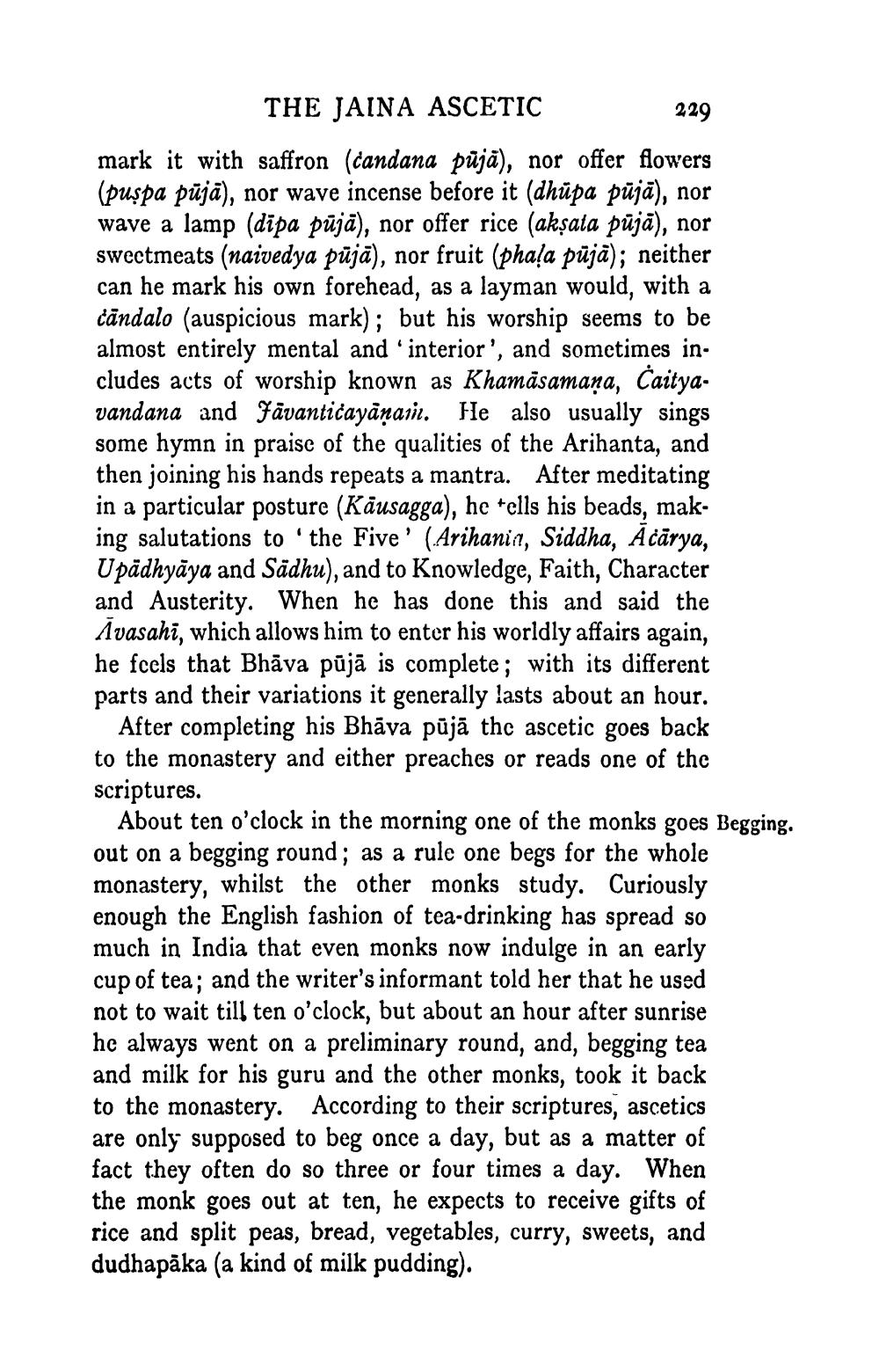________________
THE JAINA ASCETIC
229 mark it with saffron (candana pūjā), nor offer flowers (puspa pūjā), nor wave incense before it (dhüpa pūjā), nor wave a lamp (dipa pūjā), nor offer rice (akșata pūjā), nor swectmeats (naivedya pūjā), nor fruit (phala pūjā); neither can he mark his own forehead, as a layman would, with a cândalo (auspicious mark); but his worship seems to be almost entirely mental and interior', and sometimes in. cludes acts of worship known as Khamāsamaņa, Caityavandana and Fāvanticayānaıiı. He also usually sings some hymn in praise of the qualities of the Arihanta, and then joining his hands repeats a mantra. After meditating in a particular posture (Kāusagga), he tells his beads, making salutations to 'the Five' (.Arihaniit, Siddha, Ācārya, Upadhyāya and Sädhu), and to Knowledge, Faith, Character and Austerity. When he has done this and said the #vasahi, which allows him to enter his worldly affairs again, he feels that Bhāva pūjā is complete; with its different parts and their variations it generally lasts about an hour.
After completing his Bhāva pūjā thc ascetic goes back to the monastery and either preaches or reads one of the scriptures.
About ten o'clock in the morning one of the monks goes Begging. out on a begging round; as a rule one begs for the whole monastery, whilst the other monks study. Curiously enough the English fashion of tea-drinking has spread so much in India that even monks now indulge in an early cup of tea; and the writer's informant told her that he used not to wait till ten o'clock, but about an hour after sunrise he always went on a preliminary round, and, begging tea and milk for his guru and the other monks, took it back to the monastery. According to their scriptures, ascetics are only supposed to beg once a day, but as a matter of fact they often do so three or four times a day. When the monk goes out at ten, he expects to receive gifts of rice and split peas, bread, vegetables, curry, sweets, and dudhapāka (a kind of milk pudding).




